Understanding gender, sexuality, and LGBTQ+
There are many different ways that people feel and express their gender and their sexuality. There are many identity terms that people use to describe how they experience their gender and their sexuality.
In this guidebook we write ‘LGBTQ+’. This stands for lesbian, gay, bisexual, transgender, and queer. The ‘Q’ also stands for people who are questioning their gender or sexuality. The ‘+’ refers to many other gender and sexual identities, such as non-binary, pansexual, asexual, and intersex. The ‘+’ also includes new identities that people are inventing to describe their gender and sexuality, and people who do not use words to describe their gender and sexuality. We want to be an inclusive community. Even if a person does not use a specific word to describe their gender or sexuality, they can still be included in the LGBTQ+ community if that is where they feel they belong. This is especially important for people with intellectual and developmental disabilities, because some of us might not have the words to describe our gender or sexuality, but we might still be part of the LGBTQ+ community because of how we feel inside. Some people cannot or do not want to share their gender or sexuality out loud to others, but it is still important what they feel inside and how they see themselves.
We believe that this guidebook can help you to understand and support people with all different gender and sexual identities and experiences. Together we make a beautiful rainbow!
Here are some important concepts to understand about gender and sexuality. This information is also in a packet in the handout section.
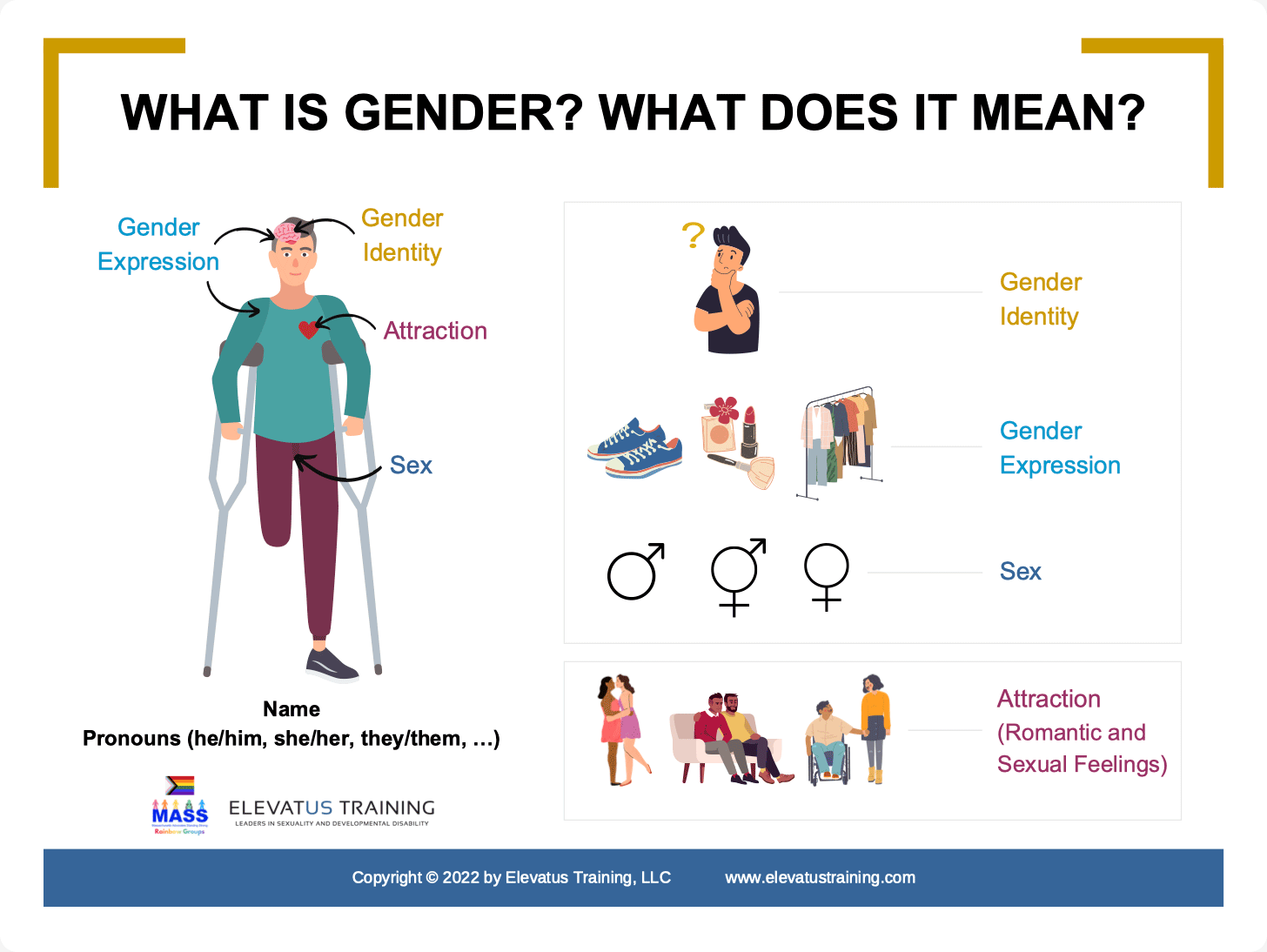
The person in the drawing shown above has many aspects of who they are. You should not make guesses about this person’s gender or sexuality based on how they look. This person has a gender identity that they feel inside their mind, a gender expression that they show, and a sex assigned at birth. They might also feel romantic and/or sexual attraction.




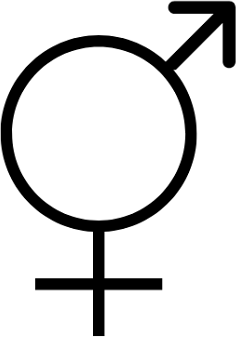
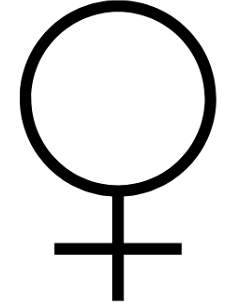
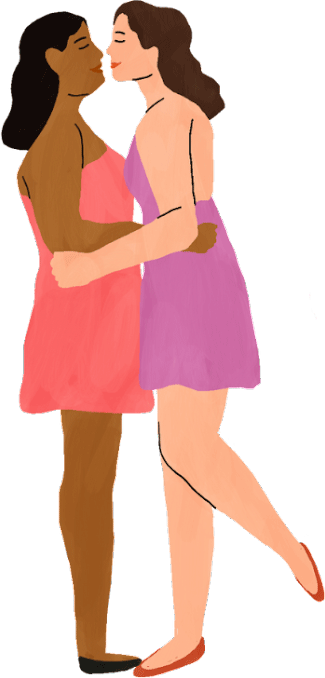


Pauline’s Example
Pauline, one of the authors of this guidebook, created this drawing to show an example of the different aspects of who she is.
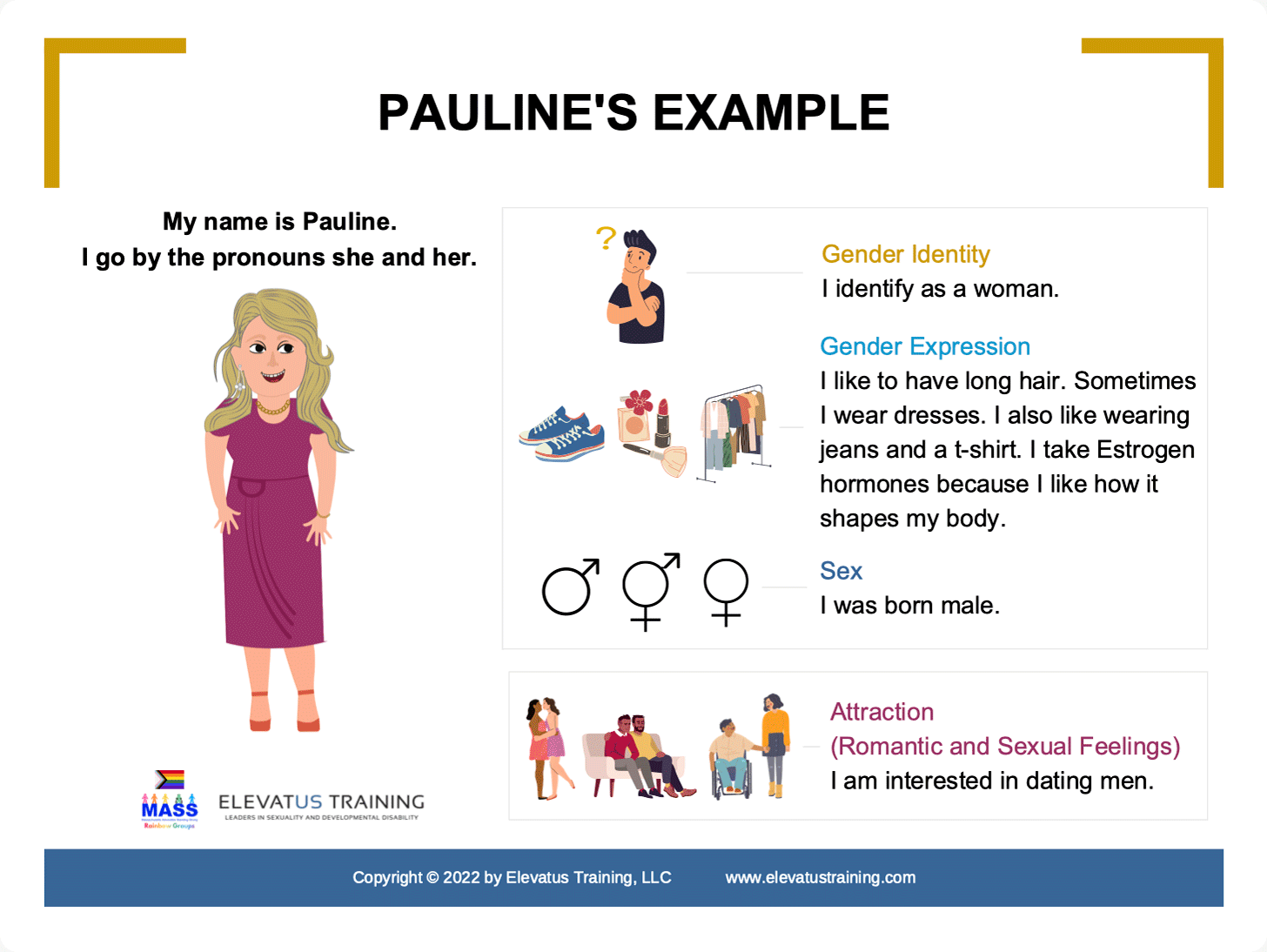
Transgender Identities
The word transgender can be used to describe many different ways that people identify. Usually transgender means a person whose gender identity (the gender they feel inside) is not what was expected based on the sex they were assigned at birth. For example, if a person was assigned male at birth and they identify as a woman, they are a transgender woman. If a person was assigned female at birth and they identify as a man, they are a transgender man. If a person was assigned male or female at birth and they identify as agender or non-binary, they might also consider themselves transgender.
Pronouns
Pronouns are words that we use to refer to someone in place of their name. Pronouns in English are associated with gender. For example, many people think of he/him/his as the pronouns for a man and she/her/hers as the pronouns for a woman. We feel that each person should be called the pronouns that are accurate for how that person feels. It can be hurtful to be called the wrong pronouns. You can show someone acceptance and respect by calling them by the right pronouns. Instead of guessing a person’s pronouns, you can ask them what pronouns they want to be called. Here is a chart showing some of the pronouns that people might use. This chart gives examples of how pronouns are used. There are other pronouns not on this chart. We think you should try your best to call each person by the pronouns that they feel are right for them.
| Subjective | Objective | Possessive | Reflexive | Examples |
|---|---|---|---|---|
| She | Her | Hers | Herself | She is my friend. I like her. |
| He | Him | His | Himself | He is my friend. I like him. |
| They | Them | Theirs | Themself | They are my friend. I like them. |
Identity Definitions
We decided not to write down definitions of gender and sexual identities. It is really hard to write a glossary of LGBTQ+ identities because these words can mean different things to different people. We believe in gender and sexual self-determination, which means that each person should be able to define for themselves what their gender and sexuality identity is and what it means to them. As you read the guidebook, you will see some examples of how self-advocates defined their genders and sexualities. We also listed resources with some links to glossaries of LGBTQ+ terms.